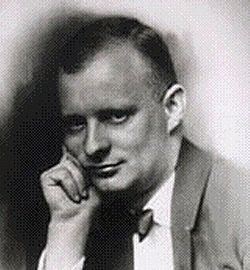
- Allegro
- Turandot, Scherzo
- Andantino
- March
Hindemith's Symphonic Metamorphosis on Themes of Carl Maria von Weber began life in early 1940, when Hindemith first took up residence in the United States after several years of public and private jousting with the Nazi government of his native Germany. The Nazis officially called his music “degenerate,” though they may also have been responding to his private, but hardly secret, expressions of detestation regarding their policies. Hindemith sketched a series of movements based on themes by Weber to be used in a ballet. However, the project died when Hindemith had one too many artistic differences with the ballet company. In 1943, Hindemith redid the music into the Metamorphosis, in the process turning it into a splashy, colorful orchestral piece of the sort that American audiences in particular seemed to like. It was an immediate success when it was premiered by Artur Rodzinski and the New York Philharmonic in January 1944. It has remained perhaps Hindemith's most popular work, even if critics often feel compelled to denigrate it. In 1943, he asked his colleague from Yale University, Keith Wilson to make a transcription for band. After permission was finally granted by the publisher in 1960, Wilson worked on the arrangement for 18 months. He regarded it as his largest and most significant transcription of his career
Program note by Howard Posner, edited by Cameron Wilson
Paul Hindemith was born in Hanau, Germany, where he began studying the violin at the age of nine. He entered the Hoch Conservatory in Frankfurt when he was 14, studying composition with Arnold Mendelssohn and Bernard Sekles. He was appointed instructor in composition at the Berlin Hochschule in 1927, and a few years later he became interested in a movement devoted to music-making among amateurs. His comprehensive Craft of Musical Composition, an outgrowth of his teaching experience, was published in 1937. In addition to dramatic works, symphonies, and numerous other orchestral pieces, Hindemith wrote much music for chamber groups, keyboard instruments, and vocal combinations. His knowledge of wind instruments is apparent in his instrumental sonatas as well as in such original and transcribed works as Concert Music for Band, Symphony in B-flat, Symphonic Metamorphosis March, and Geschwindmarsch.
Composer biography extracted from Program Notes for Band